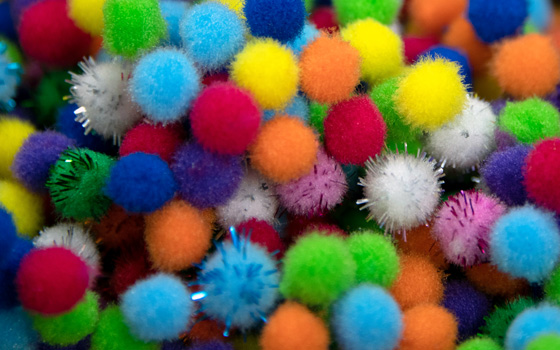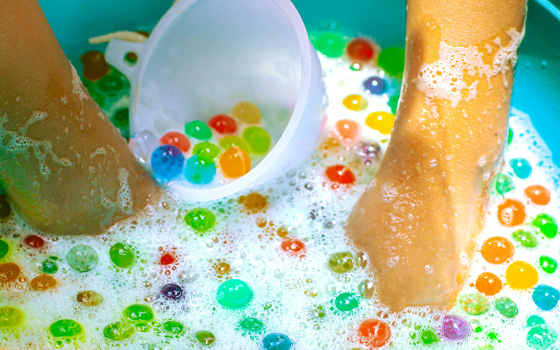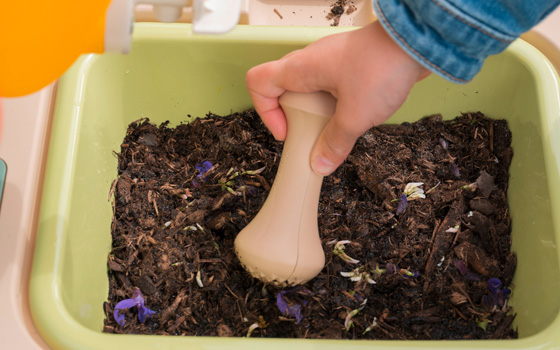11 Creative Ideas for Kids’ Activity Tables: Fun Alternatives to Sand & Water
4 min read
Last Modified 10 June 2025 First Added 10 June 2025

The world of sensory play extends far beyond just sand and water. Transform activity tables into vibrant playgrounds of discovery and learning by incorporating everyday items like rice and pasta, or experimenting with DIY creations like bubble soap foam and colourful water. Items such as bubble wrap and cardboard tubes can add exciting tactile and auditory dimensions, while children can enhance their fine motor skills by manipulating beads, buttons, and cotton balls for different sensory experiences. Sensory play activities can be adjusted to meet every child’s needs and preferences, ensuring their individual learning requirements are met.
Here’s how to enhance your child’s activity table with low-cost, fun and creative materials made from safe household items.
When submerged in water, sponges provide basic yet stimulating tactile sensations. Soaking, squeezing and splashing activities enable exploration and learning while developing fine motor abilities and demonstrating absorption knowledge. Various sponge sizes and shapes can add complexity and interest to the activity, broadening the sensory experience.
Incorporating ice cubes into water tables introduces a refreshing sensory experience. Perfect on hot days, ice cubes can cool down playtime and promote sensory development through touch and sight perception. There are plenty of learning opportunities, whether kids transfer ice cubes into different containers or learn how ice floats and melts.
Dry rice, lentils and beans are cost-effective, no-mess fillers that can transform a mundane activity table into a dynamic exploration station. Coloured rice can be easily prepared by adding food colouring and allowing it to dry completely. Adding a few drops of vinegar helps the colour spread evenly and acts as a preservative, ensuring that vibrant hues last longer. Dry pasta is another excellent option. Its various shapes and sizes encourage curiosity and fine motor skill development as children sift and sort through the pieces.
Young children find the wobbly texture combined with the vibrant colours of jelly extremely engaging. Incorporating jelly into sensory activities encourages experimentation with textures and colours, enriching their sensory experience. Plus, it’s safe and edible – ideal for infants still in the mouthing stage!

Pom poms are inexpensive and versatile craft materials that bring vibrant colours and soft textures to sensory tables. They are also an excellent reusable tool for developing fine motor skills through scooping and sorting by colour. Why not try freezing them into ice cubes for extra sensory fun?
Combining water with washable paints allows children to explore colour in a dynamic environment. Colourful water can also be frozen to create unique, colourful ice cubes.
Water beads provide a unique sensory experience, expanding overnight to offer an enjoyable texture for exploration. Young children should always be supervised while playing with water beads, as they pose a choking hazard, and beads should always be disposed of safely.
Bubble soap foam offers a fun, tactile play experience with less mess than traditional fillers. It’s an easy-to-create alternative that promotes imaginative play. Simply mix water with a gentle soap. You can add glycerin or corn syrup to make the bubbles last longer.

Play Doh is a beloved filler for sensory tables. This pliable, non-toxic substance allows children to mould and sculpt, stimulating their imagination, fine motor abilities, and social interaction. Children can explore different colours and shapes with Play Doh, making it an excellent option for indoor play.
Another fantastic choice for indoor sensory tables is slime. Its stretchable and mouldable nature provides a distinctly unique feel, encouraging sensory exploration and tactile engagement. Slime can be customised with colours and aromas to align with various play themes and learning objectives.
Mud kitchens let children experiment with different natural textures and consistencies, providing a designated space to stir, pour, sift, and mash different materials. They inspire endless creativity, allowing children to concoct pretend recipes or get messy in the mud. Messy play is not just a source of entertainment for children; it’s a crucial aspect of their development, fostering creativity, sensory exploration, and motor skills. Mixing cornstarch, cocoa powder, water, and sand is a great way to make ‘play mud’.
A mud kitchen should only be created in the sand compartment of activity tables to prevent debris from blocking plugs or valves in water compartments. Remember to clean the table thoroughly after use.

Constant supervision of children when playing with sand and water tables is essential, no matter what filling you use. Always be sure to use age-appropriate toys and materials, and regularly inspect all play equipment to ensure it remains in good condition and safe for use.
Check out our range of sand and water tables and test some fun alternatives to sand and water!
Read our disclaimers.